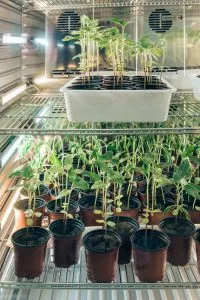 Bioengineering is a discipline that applies engineering design and principles to biological systems. Some examples of this fusion are artificial organs or limbs, the genetic synthesis of new organisms, gene editing, the computerized simulation of surgery, medical imaging technology and tissue/organ regeneration.
Bioengineering is a discipline that applies engineering design and principles to biological systems. Some examples of this fusion are artificial organs or limbs, the genetic synthesis of new organisms, gene editing, the computerized simulation of surgery, medical imaging technology and tissue/organ regeneration.
Like any other technology, bioengineering has damaging potential, whether it be through misuse, weaponization or accidents. This risk can create significant threats with large potential consequences to public health, privacy or to environmental safety.
Approaches such as genomic synthesis have over recent years dropped precipitously in price. This has triggered a boom in bioengineering research and broadened its applications. Foreseeing the impacts of bioengineering technologies is urgently needed. This was the driving force behind a recent study led by the Centre for the Study of Existential Risk at the University of Cambridge where they set to analyze emerging risks in this field.
How can we predict the future?
A method commonly referred to as the ‘Delphi technique’ was used, bringing together a group of 38 experts from six continents and 13 countries to suggest, discuss and vote for the most impactful emerging issues in bioengineering. Such exercises are critical in ensuring societal awareness and preparedness for future threats and opportunities.
The study resulted in a priority list of 20 issues on the horizon that will shape the future of bioengineering, as below. All these issues have implications for academics, policymakers and the general public and range from neuronal probes for human enhancement to carbon sequestration.
These issues will not unfold in isolation: they are likely to coalesce. Based on the issues identified, we sketched out potential future scenarios for readers to get acquainted with some of the different bioengineering technologies.
Future potential scenario #1: within 5 years
Biotechnological discoveries are increasingly facilitated by automated and roboticised, private ‘cloud labs’. Some of these labs construct drought-tolerant genetically modified plants that are bred for a warmer world. However, the effects on biodiversity and ecosystems have not been fully studied, therefore, there is uncertainty about how to deploy them.
These concerns catch the attention of billionaires who start donating to science. This causes a new influx of funding for new scientific projects, among them: protein engineering and machine learning, leading to the creation of novel compounds within the industry (e.g. new catalysts for un-natural reactions) and medical applications (e.g. selectively destroying damaged tissue which is key for some diseases). In parallel, the Organization for the Prohibition of Chemical Weapons starts including new substances on their list after identifying that some of these newly created proteins have the potential to be used as weapons due to their high lethality.
Leave a Reply